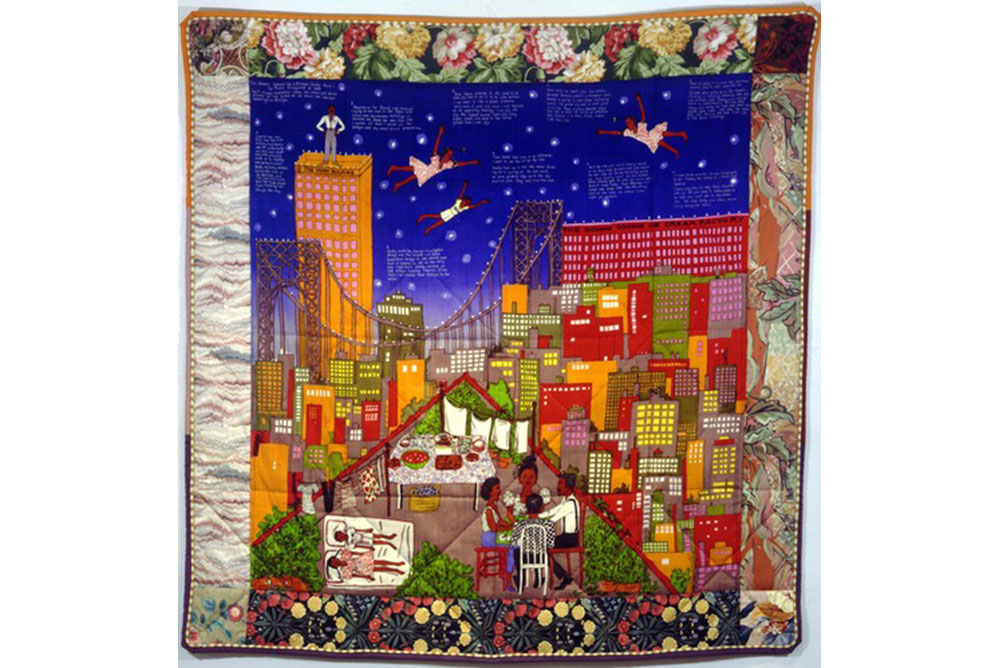


In the 1960s and ’70s, Ringgold had started her art career making overtly political paintings that dealt with issues of racial and gender equality. For Ringgold, Cassie’s ability to fly is a kind of metaphor for individual potential and the imagination’s ability to open up a world of new possibilities. It is not, however, purely autobiographical. The story of Tar Beach 2 draws on Ringgold’s own memories of growing up in Harlem and spending time with family and friends on the roof. The story’s text appears in blocks around them. In the upper section, there is a surreal depiction of Cassie’s father standing on a rooftop and Cassie and Bebe flying through the air above the George Washington Bridge.

The scene appears like a serene oasis in the midst of the crowded city that surrounds it. Underneath this table is a basket filled to the top with either food or fabric, and scattered around the edges of the roof are potted plants. Other signs of domestic life abound on the rooftop-newly washed clothing and linens hang out to dry and a variety of beverages and home-cooked dishes are spread out over a flowered tablecloth. Four adults sit at a nearby table where they chat and play cards. Ringgold’s protagonist lies on a mattress beside her younger brother, Bebe, looking up at the starry sky. Referred to in the vernacular of the day as “tar beach,” the roof was a place where city dwellers could find relief from oppressive summer heat and the stresses of everyday life. The scene is one of domestic leisure set on a New York City rooftop. Here, Ringgold tells the tale of Cassie Louise Lightfoot, a little girl growing up in Harlem in the 1940s. Inspired by African and African American storytelling traditions, the work combines narrative imagery with written text that gives permanence to what might be considered the oral component of the story.


 0 kommentar(er)
0 kommentar(er)
